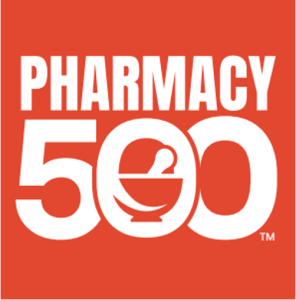Contributed by: Robert Dixon, Senior Director— Legislative and Regulatory Affairs, iA
The Important Role of State Regulators in Shaping the Future of Pharmacy
The COVID-19 pandemic brought about unprecedented challenges to the healthcare sector, with demand for pharmacy services reaching new heights. State and federal regulatory changes such as the PREP Act expanded the scope of practice for pharmacists, allowing them to play a crucial role in meeting the public’s healthcare needs. Today, new regulatory requirements and political pressures have created a more complex environment that patients must navigate. At the center of these regulatory changes and shifting dynamics are pharmacists, who are now facing new responsibilities, reshaping public expectations, and shouldering increased demands on pharmacies nationwide.
Automating Non-Patient Facing Tasks
In response to the rising demand and to free up pharmacists to provide more essential clinical services, some large pharmacy retailers have started investing significantly in high-volume automated solutions. High-volume pharmacy fulfillment solutions aim to streamline non-patient-facing tasks, ensuring that pharmacists have time to focus on patient care, consultations, and offering vital clinical services. By delegating routine tasks to automation, pharmacies can enhance their efficiency and patient safety, while optimizing their overall services.
The Impact on the Healthcare Sector
The ramifications of automation extend beyond the pharmacy walls and have a profound impact on the broader healthcare sector. In a scenario where pharmacists are better equipped to handle clinical services, physicians could direct their attention to patients with more acute needs, potentially resulting in improved patient outcomes and reduced strain on emergency rooms due to routine care cases. The collaboration between pharmacists and automated solutions has the potential to contribute to a more holistic and efficient healthcare ecosystem, benefiting patients and providers alike.
Challenges in Regulatory Alignment
Despite the promising potential of high-volume automated central fill solutions, regulatory challenges are hindering its swift implementation. Often, innovative solutions outpace state laws and regulations, creating a disconnect that can slow down progress. This may result from a lack of consideration of existing regulations during the innovation process or regulatory apprehensions about the impact of new technology. To fully unlock the benefits of automation, it is crucial for businesses and regulators to collaborate proactively, finding common ground, and ensuring patient safety and reliable care.
Fostering Collaboration for the 21st Century
As the pharmacy landscape evolves, it is imperative for industry professionals and regulators to join forces to address the challenges of the 21st century. The ultimate goal should be to improve patient outcomes while embracing innovation responsibly. By fostering a collaborative environment, businesses and regulators can work together to bridge the gap between emerging technologies and existing regulations. This partnership can help ensure that patients receive safe, reliable, and accessible care while accommodating the evolving role of pharmacists in the healthcare system.
As pharmacies explore new avenues to enhance patient access and outcomes, automated central fill solutions emerge as a promising frontier. However, the conversation around their implementation is still in its early stages, leaving key questions unanswered. Operational models, standards of practice, and safety measures are just a few of the critical aspects that require careful consideration and collaboration between industry professionals and regulators. Striking the right balance between innovation and regulation is essential to ensure that patients benefit from these advancements while maintaining the highest standards of care.
Conclusion
The COVID-19 pandemic has fueled a surge in demand for pharmacy services, leading to regulatory changes that expand the role of pharmacists in the healthcare sector. Simultaneously, political issues have begun to have more of an impact on healthcare services and delivery. In response to these challenges, high-volume central fill automation has emerged as a powerful tool to support pharmacists and help to optimize pharmacy services. By automating non-patient-facing tasks, pharmacists can have time to focus on clinical services, which can lead to improved patient outcomes and reduced strain on the healthcare system. However, realizing the full potential of pharmacy requires collaboration between businesses and regulators to align state laws and regulations with innovative solutions. Embracing innovation responsibly is key to reshaping the future of pharmacy services and ultimately improving patient care nationwide.






